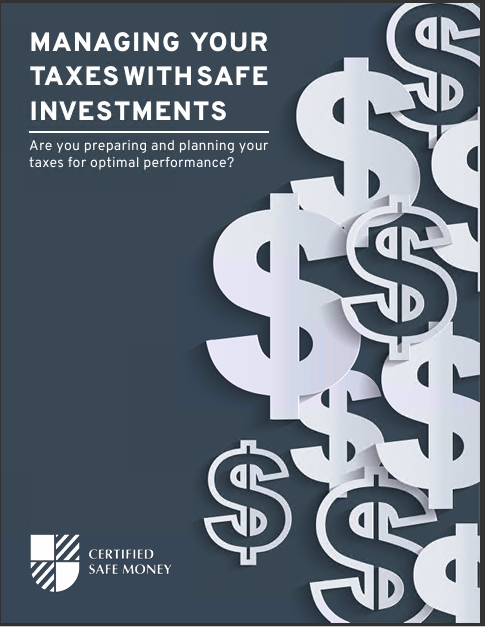2 Key Takeaways
-
Understanding current annuity rates helps you lock in better financial security for your future.
-
Rates fluctuate due to economic factors, making timing and research crucial for maximizing returns.
Why Current Annuity Rates Matter to Your Financial Stability
When it comes to securing your retirement or achieving long-term financial goals, annuities are among the safest investments you can make. They provide guaranteed income streams, protection from market volatility, and peace of mind. However, annuity rates are constantly changing, and these fluctuations significantly impact your returns. Before you put your money into annuities, there are four essential factors you need to understand about today’s annuity rates.
1. How Economic Conditions Influence Annuity Rates
Annuity rates don’t exist in a vacuum—they are directly tied to the overall economy. Here’s how that happens:
Interest Rates and Inflation
Interest rates set by central banks significantly affect annuity rates. When interest rates rise, annuity providers can offer better returns since they earn more on their investments. Conversely, when rates drop, annuity rates typically decline, making them less attractive for new investors.
Inflation also plays a major role. If inflation rates are high, purchasing power decreases, meaning your future payments might not stretch as far. Today’s economic climate, characterized by moderate inflation, means annuity providers are adjusting rates frequently, striving to balance competitive offers with economic pressures.
Economic Growth and Market Stability
During periods of economic growth, companies issuing annuities generally have better financial stability and higher profitability. They can thus afford to offer more attractive annuity rates. On the other hand, economic uncertainty often leads to lower annuity rates because providers must protect themselves from potential market downturns.
Currently, the economy is navigating a recovery phase after previous years of volatility. This makes now a particularly interesting time for annuity investors, as you may find short-term favorable rates if you act strategically.
2. The Types of Annuities and Their Current Rate Trends
Understanding the types of annuities available and their current rate trends helps you choose the most beneficial option.
Fixed Annuities: Stability with Moderate Returns
Fixed annuities guarantee a set interest rate for a defined period, typically ranging from three to ten years. Right now, fixed annuity rates are relatively attractive due to recent increases in overall interest rates. If you invest today, you might lock in these higher rates, protecting your income from future dips.
Variable Annuities: Higher Risk, Potentially Higher Reward
Variable annuities allow your funds to be invested in various market-linked options, like stocks and bonds. The rate isn’t fixed—it depends on the performance of your chosen investments. Current market conditions, characterized by gradual recovery and volatility, mean variable annuities could yield significant returns, but they also carry greater risk.
Indexed Annuities: A Balanced Approach
Indexed annuities combine elements of fixed and variable annuities. Your returns depend on a market index’s performance, such as the S&P 500, but you also get downside protection. In today’s recovering market, indexed annuities have become particularly appealing, as they offer the chance to benefit from market gains without severe exposure to downturns.
3. Timing Your Investment for Optimal Annuity Rates
Timing matters significantly when it comes to investing in annuities. Here’s how you can leverage timing to your advantage:
Locking in Rates During High-Interest Periods
Given today’s moderately rising interest rates, now could be an excellent opportunity to secure a better return on your fixed annuities. However, you need to watch market indicators carefully because economic forecasts suggest interest rates may stabilize or even decline again within the next 18 to 24 months.
Monitoring Economic Forecasts
Keeping an eye on economic forecasts and central bank announcements can give you a strategic edge. Economic policy updates typically provide clear indicators of future interest rate movements, helping you decide the optimal moment to invest.
It’s crucial to act strategically, as annuity rates quoted today might not remain available next year or even six months from now.
4. Understanding Fees, Costs, and Contract Terms
Annuities come with various fees and contract terms, which can significantly impact your returns. Even a favorable annuity rate can be offset by high fees or restrictive terms.
The Impact of Fees on Your Annuity Returns
Annuity fees often include management charges, mortality and expense risk fees, and surrender charges. These can vary widely from one annuity to another. Before investing, ensure you clearly understand these fees and factor them into your decision-making.
A low-rate annuity with minimal fees might ultimately outperform a higher-rate annuity burdened with steep charges. Always look beyond the headline rate to assess the true value of your investment.
Contract Flexibility Matters
Not all annuity contracts offer the same flexibility. Some lock in your money for extended periods, charging hefty fees for early withdrawal. Others provide more flexible options, allowing partial withdrawals or transfers without substantial penalties.
Given current market conditions, flexibility in your annuity contract can be particularly valuable. Economic uncertainties mean you might need easier access to your funds without incurring significant penalties. Always review the specific terms and consider your future financial plans carefully before investing.
Tips for Maximizing Your Annuity Investment Today
Considering these key factors, here’s how to maximize your annuity investment under current conditions:
Diversify Your Annuities
Don’t rely exclusively on one type of annuity. By diversifying between fixed, indexed, and variable annuities, you spread your risks and enhance your overall financial security. Diversification also helps you balance potential gains against market volatility.
Consult Financial Experts
Speaking with financial professionals can significantly enhance your understanding of annuity rates and their implications. Expert advice ensures you’re making informed decisions tailored to your specific financial goals and timelines.
Evaluate Regularly
Review your annuity investments periodically, especially when approaching renewal periods. Economic conditions evolve, and what was a great rate a year ago might be less competitive today. Regular evaluations enable you to make timely adjustments and maintain optimal returns.
Making Smart Choices in a Shifting Financial Landscape
Understanding annuity rates and their dynamics empowers you to secure stronger financial outcomes. By staying informed about economic trends, carefully selecting annuity types, timing your investments wisely, and thoroughly evaluating fees and terms, you maximize the benefits of your annuities.
With strategic planning and timely decisions, you can confidently build a stable financial future that aligns with your long-term goals. Now is an especially important time to consider annuities as the economic recovery continues to shape investment opportunities.













